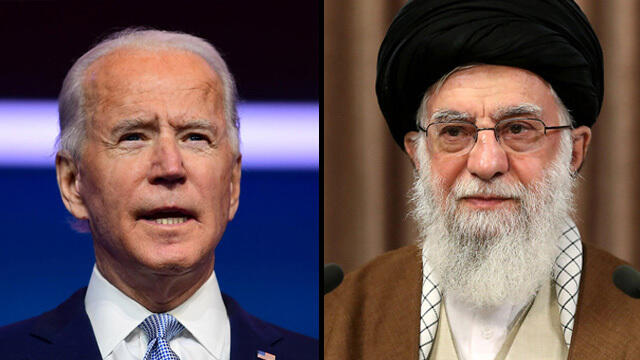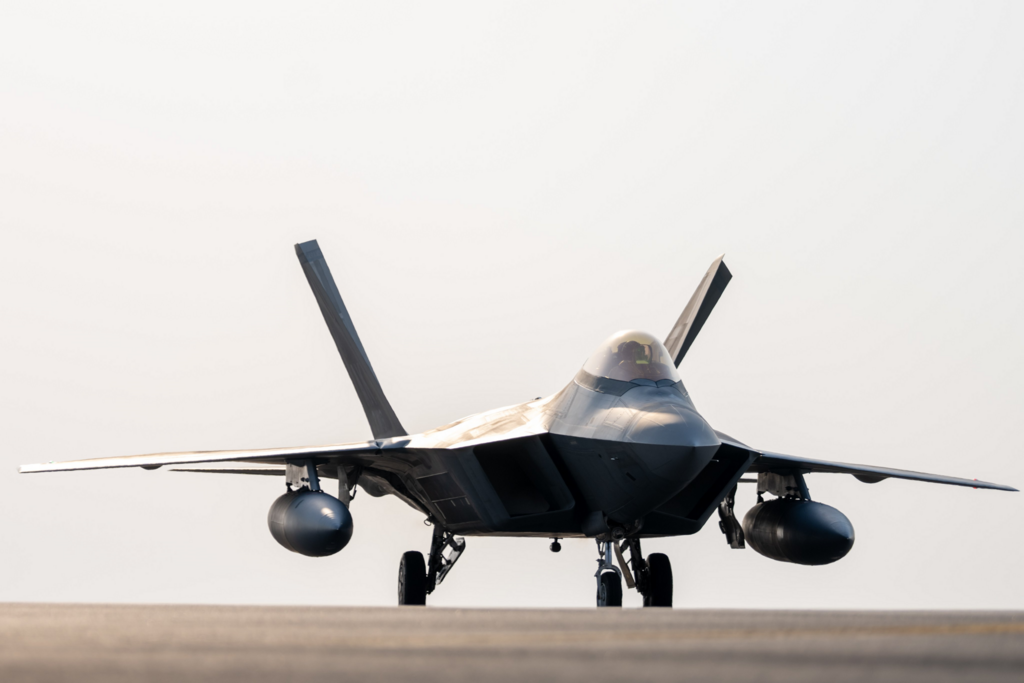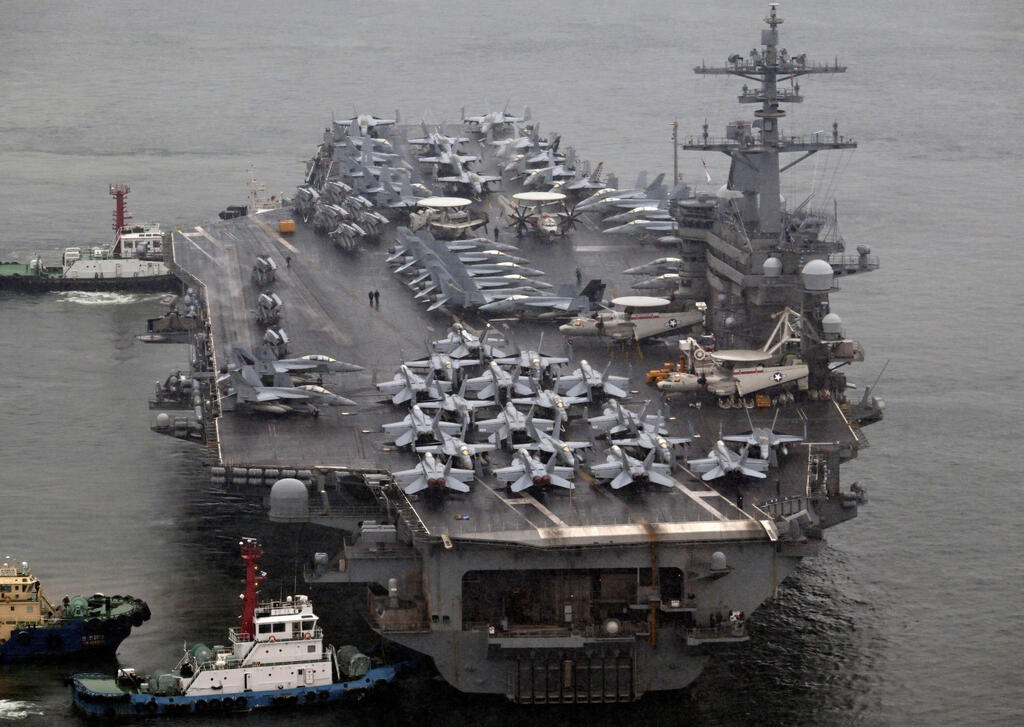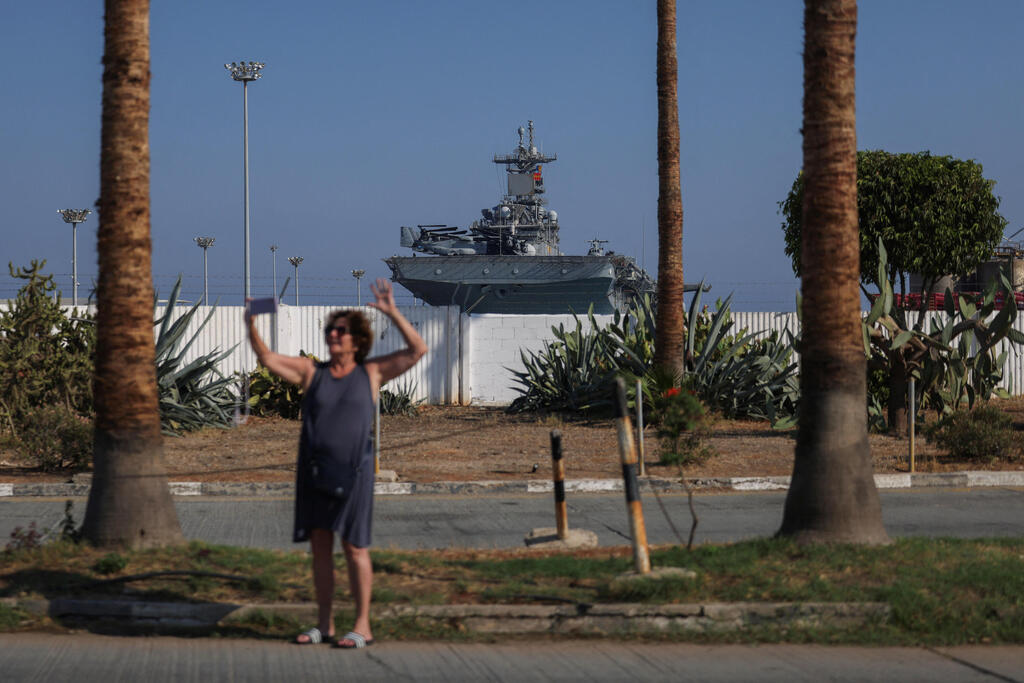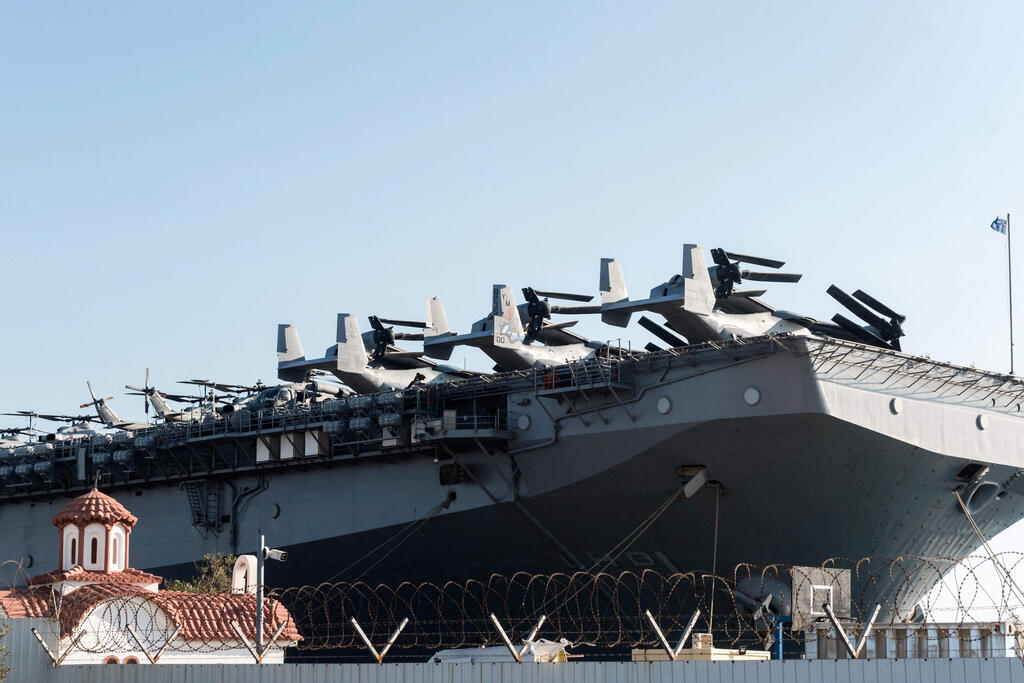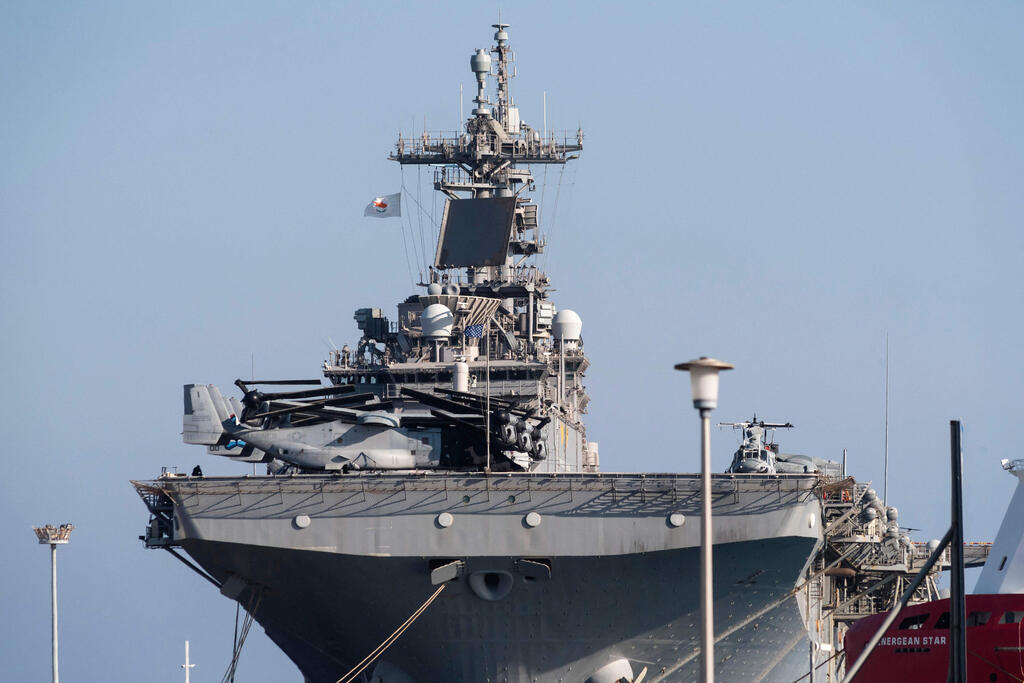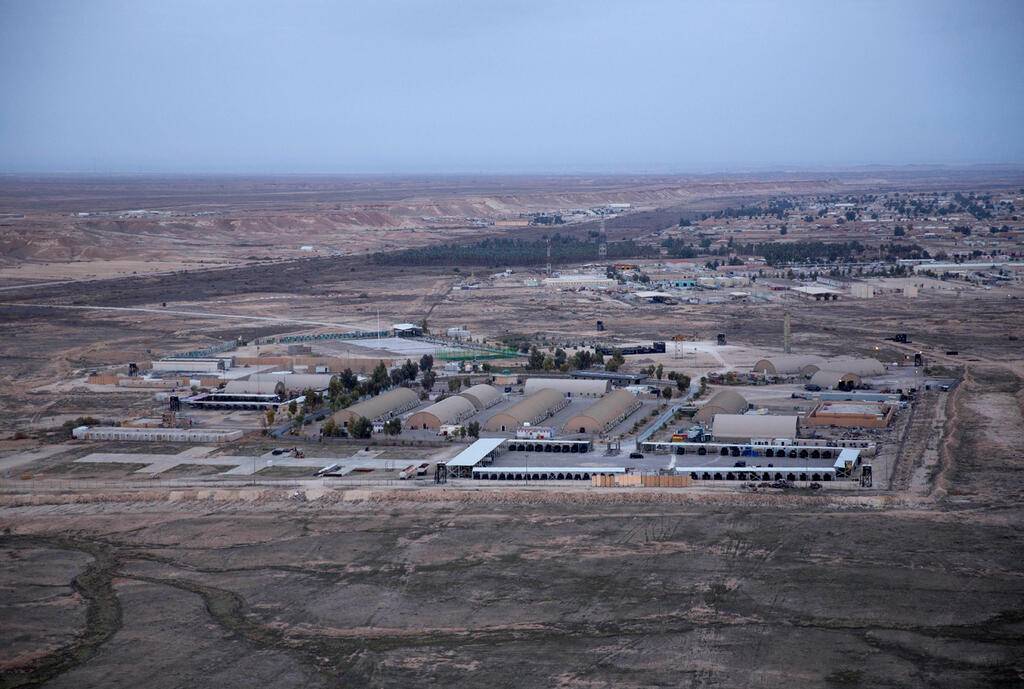Getting your Trinity Audio player ready...
In a move reminiscent of the aftermath of the October 7 terror attack and the Iranian strike on Israel last April, the United States is once again significantly increasing its military presence in the Middle East.
The goal is clear: to deter Iran and its proxies from retaliating for the recent assassinations of top Hamas and Hezbollah officials in Tehran and Beirut, protect American forces already in the region who are also targeted by the Iranian axis, and assist Israel in defending against potential attacks, as it did in April.
8 View gallery
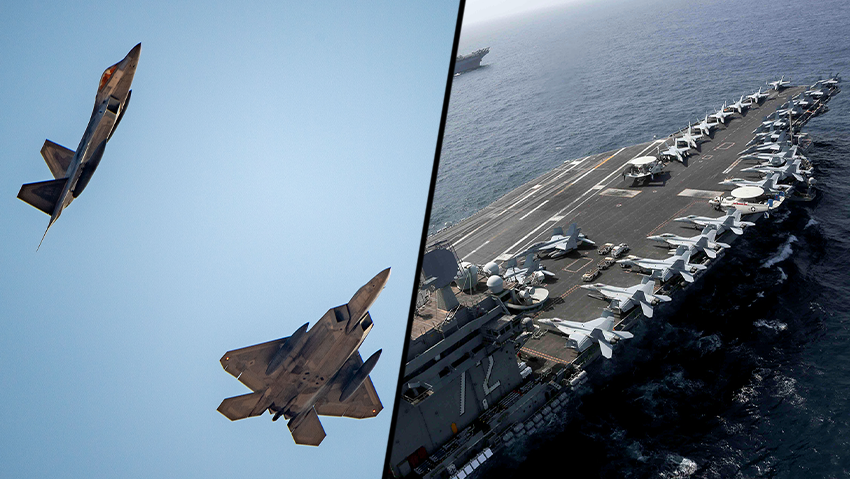

F-22 Raptor fighter jets and the Abraham Lincoln aircraft carrier
(Photo: Reuters, from X)
"The changes in our force posture will enhance our already extensive capabilities in the region," Defense Secretary Lloyd Austin said after speaking with Israeli Defense Minister Yoav Gallant about Washington's troop reinforcements. "We are prepared to act on short notice to address emerging threats to our security, our partners, and our interests.”
Pentagon Press Secretary Maj. Gen. Pat Ryder noted that Austin assured Gallant that "while war is not inevitable and de-escalation is the preferred course of action, the U.S. will defend Israel if it were attacked."
The last time Israel was attacked by Iran and its allies, on the night of April 13-14, over 300 missiles and drones were launched from multiple directions. According to reports, the U.S. Air Force alone helped intercept 80 of the drones.
The IDF said that almost all the munitions launched during that attack were intercepted, with only five breaching the defense shield of Israel and its regional and international coalition allies. However, there is now concern that Iran or Hezbollah might attempt a broader, more complex assault that could pose a greater challenge to these defense capabilities.
Although reports suggest that Iran is deliberating over its response, with voices in Tehran warning against the repercussions of a direct, extensive attack that could ignite a regional war, the ultimate decision rests with Iran's Supreme Leader Ayatollah Ali Khamenei, a hardliner in the Islamic Republic. Consequently, Israel, the U.S. and their allies are taking no risks and are preparing for the worst-case scenario.
Below is a summary of the newly deployed U.S. forces in the region, according to various reports, though it should be noted that for obvious reasons, the U.S. does not disclose the exact locations of its forces, which have recently been targeted by pro-Iranian militias.
The Pentagon's latest announcement regarding troop reinforcements, deemed significant by military analysts for deterring Iran, involved the deployment of F-22 Raptor fighter jets. The announcement about their arrival in the U.S. Central Command operating theater did not specify the number of aircraft or the base they were sent to, noting only that the aim is to help prevent a regional war with Iran or its proxies.
American officials told Air & Space Forces Magazine that the deployed F-22 squadron consists of approximately 12 jets from a base in Alaska. The officials noted that the jets covered over 10,000 kilometers, stopping halfway at a UK base and relying on aerial refueling. They crossed the Mediterranean Sea and landed at a base in the region—whose location remains classified. The Pentagon told the magazine that the positioning of the fighter jets in the Middle East would remain confidential to ensure troop safety.
The magazine reports that the F-22s are now the most advanced fighter jets in the region. These fifth-generation fighters were developed for air superiority, and the Pentagon emphasizes that they can also support defensive missions.
"They can be a very invaluable defensive platform," said Deputy Pentagon Press Secretary Sabrina Singh. "They add maneuverability [and] additional systems that allow the commander to have more versatile options. And I think it sends a very clear signal to the region that we want to see tensions de-escalate. And it sends a really powerful message of deterrence.”
According to Air & Space Forces Magazine, the U.S. Air Force already has fighter jets from three other models in the region: F-15E fighters from the 335th Squadron based in North Carolina, which assisted in intercepting drones during the April attack; F-16s from the 510th Squadron deployed from a base in Italy; and A-10 jets from the 107th Squadron based in Michigan. The magazine notes that while the A-10s have limited air-to-air capabilities, likely referring to drone interception, they can pose a threat to ground and naval forces.
Navy squadron moved to land base 'closer to Israel'
The U.S. Navy also has air power, with the magazine reporting that about 12 F/A-18 Super Hornets—normally stationed on the aircraft carrier Theodore Roosevelt—were relocated amid tensions to an air base in the region, closer to Israel and U.S. forces operating in Iraq, Syria and Jordan. However, their exact location remains confidential.
The report suggests that moving the squadron to a land base in the region allows for quicker operations, as the Roosevelt is currently much farther away, in the Gulf of Oman. Another advantage is that while carrier-based air operations are typically limited to 12 hours a day, a land base allows for 24/7 activity.
American officials told the magazine that the squadron's move from the carrier is temporary and that they are expected to return to the Roosevelt when it departs the U.S. Central Command (CENTCOM) operating theater—meaning the Middle East—in about a week.
To ensure the region does not remain without a carrier, the U.S. announced that the Abraham Lincoln would replace the Roosevelt. The Lincoln is currently en route from the Pacific, though its exact deployment in the Middle East remains unclear.
The Roosevelt's current location in the Gulf of Oman is likely strategic, enabling the U.S. to monitor Iranian activity in the Persian Gulf. Reports indicate the carrier is situated close to Bandar Abbas, Iran's largest naval port. An aircraft carrier is accompanied by a strike group, including destroyers, additional warships and submarines.
Even if the new carrier doesn't reach the Mediterranean, a large warship nicknamed a "mini-aircraft carrier" has been operating in the eastern part for weeks. The amphibious assault ship USS Wasp arrived in the region at the end of June and docked in Limassol, Cyprus, last Wednesday.
It's dubbed a "mini-carrier" because it carries AV-8B Harrier jets capable of vertical takeoff and landing, alongside combat helicopters. Reports indicate it also carries a Marine unit, though their number is unclear.
The USS Wasp arrives in Limassol, Cyprus
(Video: Reuters)
As an amphibious ship, the USS Wasp can evacuate civilians from Lebanon if a full-blown war erupts between Israel and Hezbollah, though Washington clarified in late June that its primary purpose is deterrence.
The UK also seems to be preparing for a potential evacuation from Lebanon, with reports in Cyprus of two British warships anchored there—RFA Mounts Bay and RFA Cardigan Bay. These support ships, also capable of amphibious landings, can each carry 700 people in an emergency.
The U.S. Navy has Arleigh Burke-class destroyers in the region, armed with guided missiles and previously assisting in intercepting ballistic missiles in the region. The New York Times reported last week that, as part of the force buildup, cruisers capable of intercepting ballistic missiles were sent to the region, and that, if necessary, the U.S. would send additional ground-based missile defense systems. It's unclear if such systems have been deployed since.
The U.S. is not neglecting the Red Sea theater, where repeated missile and drone attacks by Yemen’s Houthis threaten commercial shipping and Israel. While the Pentagon has not released official statements about its force deployment there, a report on an American naval site this week said the USS Laboon and USS Cole destroyers entered the Red Sea, having split from the carrier group accompanying the Roosevelt. The Houthis claimed on Wednesday they launched missiles and drones at the ships in the Gulf of Aden, the waterway connecting the Arabian Sea and the Red Sea.
$3.5 billion; Biden is prepared to do 'everything' to defend Israel
In addition to the new forces sent by the U.S., it maintains a constant regional presence, with about 2,500 U.S. troops in Iraq and another 900 in Syria. It also has a small force in Jordan, three of whose soldiers were killed in a drone attack this past January, prompting retaliatory airstrikes. As a result, pro-Iranian militias in Iraq and Syria avoided attacking U.S. forces for several months.
However, in recent weeks, this lull has ended: two rockets hit the Ain al-Assad base in Iraq last Monday, injuring five U.S. soldiers and two contractors. The U.S. described this as a "dangerous escalation" by Iran.
Tehran said that the U.S. bears responsibility for the operation in which Hamas leader Ismail Haniyeh was killed in Tehran, an act attributed to Israel. These claims have sparked concern in Washington that U.S. forces might also be targeted in the promised Iranian retaliation. The force buildup is thus unsurprising, but the U.S. emphasizes that it is also aimed at deterring Iran and protecting Israel.
In another show of support for Israel, despite tensions between President Joe Biden and Prime Minister Benjamin Netanyahu regarding the hostage deal talks—which Washington hopes will end the war in Gaza and reduce regional tensions—it was announced on Friday that the U.S. would transfer $3.5 billion to Israel for purchasing U.S. weapons and military equipment. This is part of a massive $14 billion package that the U.S. Congress approved for Israel back in April.
White House National Security Council spokesperson John Kirby said Biden "is prepared to do everything" to defend Israel and has allocated significant resources for this purpose. "When we hear such rhetoric, we must take it seriously, and we do."



